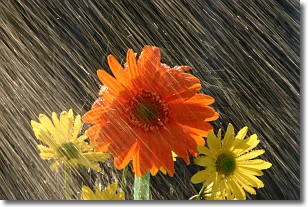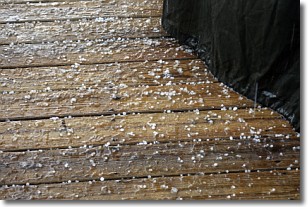Weather Alert in Alaska
Flood Warning issued August 28 at 6:08PM AKDT until August 31 at 10:00AM AKDT by NWS Anchorage AK
AREAS AFFECTED: Western Susitna Valley; Southern Susitna Valley; Central Susitna Valley
DESCRIPTION: * WHAT...Flooding caused by excessive rainfall continues. * WHERE...the Yentna River and tributaries at and above Lake Creek. * WHEN...Until 1000 AM AKDT Sunday. * IMPACTS...At 20.5 feet, water begins to inundate several low-lying cabins. At 22.0 feet, more extensive flooding of cabins, resorts, and private property. * ADDITIONAL DETAILS... - At 545 PM AKDT, Between 1 and 2 inches of rain have fallen. The river gage at Lake Creek and other gages across the Susitna Valley show considerable rises across area rivers. Additional rainfall amounts of around an inch are expected. For Yentna River at Lake Creek: At 5:00pm the stage was 20.9 feet and rising. Flood Stage is 20.5 feet. Forecast: A crest around 23 feet is expected around Friday night into early Saturday morning with an estimated crest time at 4 am Saturday. The river will then begin to fall and is expected to go below flood stage Sunday. This may equal or exceed the August 2024 crest of 22.4 feet. - Http://www.weather.gov/safety/flood
INSTRUCTION: Stay tuned to further developments by listening to your local radio, television, or NOAA Weather Radio for further information.
Want more detail? Get the Complete 7 Day and Night Detailed Forecast!
Current U.S. National Radar--Current
The Current National Weather Radar is shown below with a UTC Time (subtract 5 hours from UTC to get Eastern Time).

National Weather Forecast--Current
The Current National Weather Forecast and National Weather Map are shown below.

National Weather Forecast for Tomorrow
Tomorrow National Weather Forecast and Tomorrow National Weather Map are show below.

North America Water Vapor (Moisture)
This map shows recent moisture content over North America. Bright and colored areas show high moisture (ie, clouds); brown indicates very little moisture present; black indicates no moisture.

Weather Topic: What is Rain?
Home - Education - Precipitation - Rain
 Next Topic: Shelf Clouds
Next Topic: Shelf Clouds
Precipitation in the form of water droplets is called rain.
Rain generally has a tendency to fall with less intensity over a greater period
of time, and when rainfall is more severe it is usually less sustained.
Rain is the most common form of precipitation and happens with greater frequency
depending on the season and regional influences. Cities have been shown to have
an observable effect on rainfall, due to an effect called the urban heat island.
Compared to upwind, monthly rainfall between twenty and forty miles downwind of
cities is 30% greater.
Next Topic: Shelf Clouds
Weather Topic: What is Sleet?
Home - Education - Precipitation - Sleet
 Next Topic: Snow
Next Topic: Snow
Sleet is a form of precipitation in which small ice pellets are the primary
components. These ice pellets are smaller and more translucent than hailstones,
and harder than graupel. Sleet is caused by specific atmospheric conditions and
therefore typically doesn't last for extended periods of time.
The condition which leads to sleet formation requires a warmer body of air to be
wedged in between two sub-freezing bodies of air. When snow falls through a warmer
layer of air it melts, and as it falls through the next sub-freezing body of air
it freezes again, forming ice pellets known as sleet. In some cases, water
droplets don't have time to freeze before reaching the surface and the result is
freezing rain.
Next Topic: Snow
Current conditions powered by WeatherAPI.com




